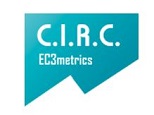Love of neighbor: interiority and corrective of human relationships in Søren Kierkegaard
DOI:
https://doi.org/10.53439/stdfyt54.27.2024.143-164Keywords:
love of neighbor, interiority, corrective, Christianism, divine commandAbstract
Søren Kierkegaard defined himself as the spy of Christianity, with the mission of revealing its true meaning in a world that calls itself Christian but is not. He points out social problems without neglecting the importance of interiority in Christian love, which prevent Christianity from being lived according to the Scriptures, which command us to love our neighbor as ourselves. This Christian love is a radical demand that seeks to overcome selfishness and promote authentic and healthy relationships. Kierkegaard emphasizes that Christian love must develop from the interiority of singular individuals (Enkelte) and act as a corrective in human relationships, which are deteriorated. This text presents a praxis of love that, for Kierkegaard, takes on a corrective character for broken relationships that cannot fulfill the command of the law, aiming to foster healthy relationships.
Downloads
References
Aponte, J. (2020). Kierkegaard y el salto de fe. Un acto de individualidad. Hybris. Revista de Filosofía, 11(1), 197-224. https://doi.org/10.5281/zenodo.3872246
Aumann, A. (2013). Self-Love and Neighbor-Love in Kierkegaard’s Ethics. Kierkegaard Studies Yearbook, 2013(1), 197-216. https://doi.org/10.1515/kier.2013.2013.1.197
Carlisle, C. (2021). El filósofo del corazón. La inquieta vida de Sören Kierkegaard. Taurus.
Collins, J. (1990). El pensamiento de Kierkegaard. Fondo de Cultura Económica.
David Giraldo, J. S. (2021). Modernidad, pensamiento y crítica social en Kierkegaard. Disputatio. Philosophical Research Bulletin, 10(19), 111-139. https://doi.org/10.5281/zenodo.7097634
David Giraldo, J. S. (2024). Søren Kierkegaard: Sobre la exigencia ética radical en el amor al prójimo. Open Insight, 15(34), 117-143. https://doi.org/10.23924/oi.v15i34.610
Dickinson, T. W. (2018). Exercises in New Creation from Paul to Kierkegaard. Palgrave Macmillan. https://doi.org/10.1007/978-3-319-97843-7
Dip, P. C. (2010). Teoría y praxis en Las obras del amor: Un recorrido por la erótica kierkegaardiana. Editorial Gorla.
Evans, C. S. (2004). Kierkegaard’s Ethics of Love: Divine Commands and Moral Obligations. Oxford University Press. https://doi.org/10.1093/0199272174.001.0001
Ferreira, M. J. (1997). Faith and the Kierkegaardian leap. In A. Hannay & G. D. Marino (Eds.), The Cambridge Companion to Kierkegaard (pp. 207-234). Cambridge University Press. https://doi.org/10.1017/CCOL0521471516.009
Ferreira, M. J. (1999). Other-Worldliness in Kierkegaard’s Works of Love. Philosophical Investigations, 22(1), 65-79. https://doi.org/10.1111/1467-9205.00084
Ferreira, M. J. (2001). Love’s Grateful Striving: A Commentary on Kierkegaard’s Works of Love. Oxford University Press. https://doi.org/10.1093/0195130251.001.0001
Fromm, E. (1982). El arte de amar: una investigación sobre la naturaleza del amor (N. Rosenblatt, trad.). Paidós.
Grøn, A. (2005). Reconocimiento y comunicación (S. Muñoz Fonnegra, trad.). Estudios de Filosofía, (32), 27-40. https://doi.org/10.17533/udea.ef.12839
Guerrero Martínez, L. (2014). Fe, esperanza y caridad: La vida cristiana en Søren Kierkegaard. Open Insight, 5(7), 61-76. https://doi.org/10.23924/oi.v5i7.91
Hannay, A. (2003). Kierkegaard: A Biography. Cambridge University Press. https://doi.org/10.1515/9783110178951.189
Hannay, A. (2008). Kierkegaard on Natural and Commanded Love. In E. F. Mooney (Ed.), Ethics, Love, and Faith in Kierkegaard: Philosophical Engagements (pp. 111-120). Indiana University Press.
Huls, J. (2011a). Love founded in God: The fruits of love in Kierkegaard’s ‘Works of love’. HTS Teologiese Studies/Theological Studies, 67(3), 1-10. https://doi.org/10.4102/hts.v67i3.1117
Huls, J. (2011b). The hidden life of love: The function of the Bible in Kierkegaard’s ‘Works of love’. HTS Teologiese Studies/Theological Studies, 67(3), 1-11. https://doi.org/10.4102/hts.v67i3.1116
Kierkegaard, S. (1972). Mi punto de vista (J. M. Velloso, trad., 4ta. ed.). Aguilar.
Kierkegaard, S. (1976). Søren Kierkegaard’s Journals and Papers (H. V. Hong & E. H. Hong, trads., Vol. 3). Indiana University Press.
Kierkegaard, S. (2000). Discursos edificantes/Tres discursos para ocasiones supuestas (D. González, trad.). Trotta.
Kierkegaard, S. (2006). Las obras del amor: meditaciones cristianas en forma de discursos (D. Gutiérrez Rivero, trad.). Ediciones Sígueme.
Kierkegaard, S. (2007). O lo uno o lo otro. Un fragmento de vida II (D. González, trad.). Trotta.
Kierkegaard, S. (2009). Ejercitación del cristianismo (D. Gutiérrez Rivero, trad.). Trotta.
Kierkegaard, S. (2012). La época presente (M. Svensson, trad.). Trotta.
Krishek, S. (2008). Two Forms of Love: The Problem of Preferential Love in Kierkegaard’s Works of Love. Journal of Religious Ethics, 36(4), 595-617. https://doi.org/10.1111/j.1467-9795.2008.00364.x
Krishek, S. (2009). Kierkegaard on faith and love. Cambridge University Press. https://doi.org/10.1017/CBO9780511770517
Larrañeta, R. (1990). La interioridad apasionada. Verdad y amor en Søren Kierkegaard. Editorial San Esteban.
Lutero, M. (1974). La autoridad secular. En Obras de Martin Lutero (C. Witthaus, trad., Vol. 2, pp. 125-164). Editorial Paidós.
McCreary, M. L. (2011). Deceptive Love: Kierkegaard on Mystification and Deceiving into the Truth. Journal of Religious Ethics, 39(1), 25-47. https://doi.org/10.1111/j.1467-9795.2010.00464.x
Muñoz Fonnegra, S. (2005). La exigencia ética. Sobre la doctrina del amor de Kierkegaard. Estudios de Filosofía, (32), 41-59. https://doi.org/10.17533/udea.ef.12840
Nowachek, M. T. (2016). The Monumental Task of Kierkegaard’s Attack upon Christendom. Kierkegaard Studies Yearbook, 2016(1), 159-186. https://doi.org/10.1515/kierke-2016-0111
Quinn, P. (1997). Kierkegaard’s Christian Ethics. En A. Hannay & G. Marino (Eds.), The Cambridge Companion to Kierkegaard (pp. 349-375). Cambridge University Press. https://doi.org/10.1017/CCOL0521471516.015
Rodríguez, P. U. (2012). La dificultad de ser amado: El reconocimiento del otro en Las obras del amor de Kierkegaard. Tópicos, (24), 223-243. https://doi.org/10.14409/topicos.v0i24.7568
Rodríguez, P. U. (2014). “Mirar” y “ser mirado” en la doctrina del amor de Kierkegaard: Una lectura de Las obras del amor desde el concepto de reconocimiento. Cuadernos de Filosofía, (62), 5-19. https://doi.org/10.34096/cf.n62.3008
Rodríguez, P. U. (2015). Amor a sí mismo y amor al prójimo: El problema del egoísmo en Kierkegaard y Feuerbach. El Arco y La Lira. Tensiones y Debates, 3, 77-89. https://revistas.ungs.edu.ar/index.php/elarcoylalira/article/view/280
Rotenstreich, N. (1983). Love and Leap. Nietzsche’s and Kierkegaard’s Approaches to Philosophy. Kant-Studien, 74(4), 437-452. https://doi.org/10.1515/kant.1983.74.4.437
Russell, H. (2015). The Passion of Faith and the Work of Love: Barrett, Augustine, and Kierkegaard. Toronto Journal of Theology, 31(1), 66-74. https://doi.org/10.3138/tjt.3102
Smith, G. M. (2007). Kierkegaard: Responsibility to the Other. Critical Review of International Social and Political Philosophy, 10(2), 181-197. https://doi.org/10.1080/13698230701207964
Svensson, M. (2015). El pensamiento de Soren Kierkegaard: Polemizar, aclarar, edificar. Clie.
Torralba, F. (2016). La esencia del amor en Kierkegaard. Interpretación de Las obras del amor (1847). Pensamiento. Revista de investigación e información filosófica, 72(271), 411-429. https://doi.org/10.14422/pen.v72.i271.y2016.010

















